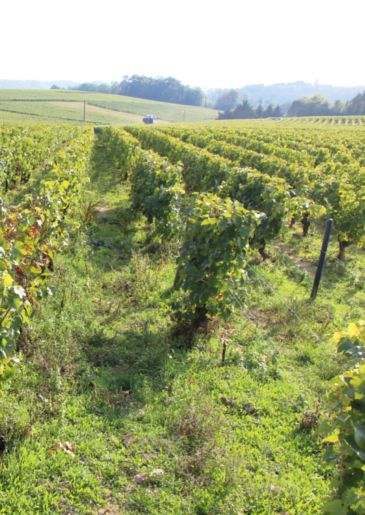
Touraine Mesland
Located on the right bank of the Loire River downstream from Blois, the vineyard of Touraine-Mesland spans across six municipalities: Mesland, Monteaux, Onzain, Chouzy-sur-Cisse, Molineuf, and Chambon-sur-Cisse.
The vineyard is defined by limestone hills overlooking the Loire Valley at a height of 30 to 40 meters. Above these vineyard slopes lies an extensive undulating plateau corresponding to the Gâtine tourangelle. The vineyard slopes are intersected by secondary valleys, including the Cisse, the Cissereau, and the Petite Cisse.
Benefiting from a favorable southwest orientation, the vineyard's morphology is strongly influenced by the Cisse Valley, which provides slopes with good-quality vineyard soils. The vineyard enjoys a semi-oceanic climate and benefits from the mildness of the Loire Valley climate: mild winters, gently warm summers, and sunny autumns, allowing for the vine's healthy vegetative development. The naturally well-drained soils with good exposure ensure regularity and maturation. The AOC area was revised in 1986 at the request of the winemakers. Currently, 356 hectares are in production, with the main viticultural areas concentrated in the municipalities of Mesland, Monteaux, and Onzain. About ten winemakers currently cultivate the vineyard.
History of AOC Touraine Mesland
The vineyard in the Mesland and Monteaux region has had a continuous presence from the mid-11th century to the present day. A diploma from Louis I the Pious in 832 attests that the Abbey of Marmoutier placed vine cultivation at the forefront of its agricultural resources in the neighboring territory of Chambon.
By the end of the 15th century, 220 acres of vineyards (150 hectares) were recorded at the Mesland priory. Some of these vineyard plots (such as la Perdrière, la Galetière, la Boucherie, la Morandière...) are still planted today.
In the 18th century, the comprehensive census of the Mesland priory listed all of the Abbey's possessions in the two parishes of Mesland and Monteaux. The 1833 cadastral survey attests to the presence of vineyards in the municipalities of Mesland, Monteaux, Onzain, Chambon-sur-Cisse, Chouzy-sur-Cisse, and Molineuf, up to the limits of Blois, where the Grouets slopes produced a famous wine.
The long history of viticulture bestows a sense of prestige on the appellation as a whole.
AOC Touraine Mesland
The Appellation d'Origine Contrôlée (AOC) Touraine-Mesland covers the four municipalities of Mesland, Monteaux, Onzain, and Chouzy-sur-Cisse located on the right bank of the Loire River, between Blois and Amboise, facing the Chaumont-sur-Loire castle, over an area of 350 hectares.
The AOC Touraine-Mesland was officially recognized by decree on July 15, 1955. Its winemaking tradition dates back to the 11th century, with the Romans being the first to plant vines. The monks of the Abbey of Marmoutiers, near Tours, gave great importance to Mesland, where they established a priory. This birth was, in fact, the culmination of a long period of demonstration of the will of the vine growers in the Mesland territory to be recognized.
Touraine-Mesland whites, dominated by Chenin or Pineau de Loire, with a touch of Chardonnay, age beautifully and pair well with fish and shellfish.
The production of white wines in the Touraine-Mesland appellation has always been somewhat confidential, currently accounting for 1/7th of the volumes produced in red and rosé. The Chenin grape, locally called Pineau de Loire, finds interesting expression in the chalky and flinty soils of the appellation. It is destined to produce wines for aging and imparts linden aromas to them. Chenin predominates in a blend where its combination with Chardonnay and Sauvignon allows the wines to round out, reach their fullness, and give Touraine-Mesland white wines the typicality that makes them sought after by enthusiasts.
The new blending rules for Touraine-Mesland whites are as follows:
• Sauvignon may be used in a maximum proportion of 30% of the vineyard.
• Chardonnay may be used in a proportion lower than or equal to that of Sauvignon, and a maximum of 15% of the vineyard.
For more information about the AOC and a list of producers, visit the official website.
